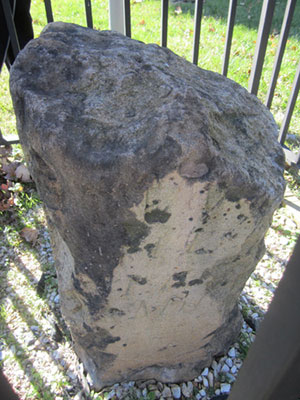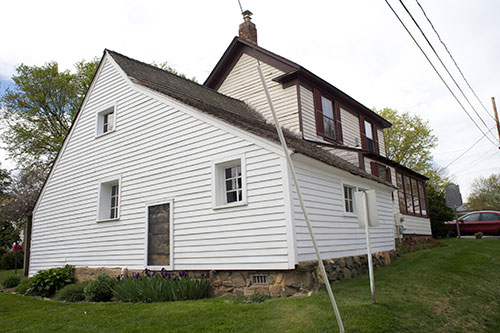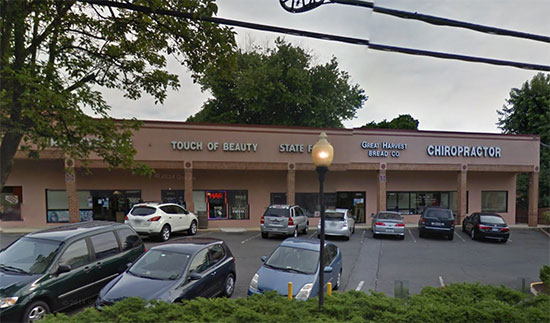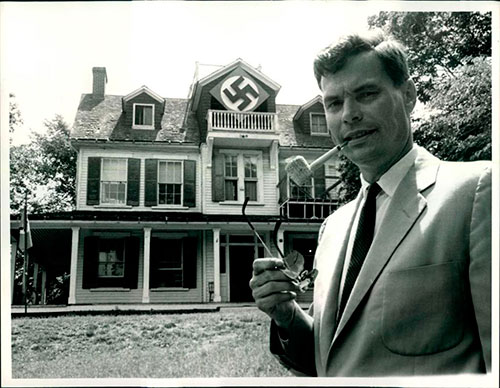Stones and Houses

The march northwest must have been something for those surveyors working for Andrew Ellicott. If you have ever worked the rich red clay soil of Virginia, you will understand something of the clinging, clawing nature of the vegetation, and the spiny tendrils of the tough vines that snake around everything and can make the rush impenetrable. They were cutting that twenty-foot line, straight as a die from mile Stone to Stone.
The further the party got from Alexandria the wilder it became. Some little farm plots had been jacked out of the wilderness; Arlington County’s oldest surviving home dates to 1750, and the Ball-Sellers farmhouse may have provided sustenance to the weary workers who hacked and dug their way up the looming Virginia Piedmont near SW7 toward the place they would place the West Stone, and then turn northwest toward the mighty Potomac river.

Human are gregarious creatures, were then and were now. We in Arlington are no exception, though as many, I prefer bowling alone. Based on our proximity to the nation’s capital, we are unfortunately cursed with a variety of shadowy conspiracy groups. It comes from the tension between the burghers of the town of Alexandria on the west shore of the river, and the plotting of the Georgetown elite who used their geographic advantage on the east side of the river well. Their access to the Executive and the Congress served to advance their economic interest. Tensions rose, and by 1846 President James K. Polk signed legislation sending Alexandria and the territory north of it encompassed by the District Stones to Virginia.
Abolitionists in Congress were delighted to be quit of the sale of slaves in the Federal Enclave, and Richmond were just as happy to have the land back and out from under the hands of the Yankee meddlers. The Stones were demoted from national Monuments to County border markers.
Fifteen years later Arlington (then known as Alexandria County) was under the heel of the Yankee occupiers and earthen forts were thrown up on all the highlands in massive defensive works known as the Arlington Line. The remnants of some of them remain in some odd corners of the County, and I once had the privilege of something quite unusual happen in a former sniper trench while investigating.
The ruination of the local economy that followed the end of the war, and the abandonment of the forts and trenches that crisscrossed the County made the County a bedraggled place for generations.
We have moved on, of course. The mushrooming of Washington through the apex of its post-World War Two power has made this a diverse area with no more in common with the old Confederacy than any other city in the North. The border with the south has moved down the road quite a ways, and I note the Virginia Welcome Center on I-95 is almost to Fredericksburg.
Still, it is not far away in time. I have coffee sometimes at the Java Shack over on North Franklin Road, which was once the headquarters of the American Nazi Party, not that you could tell any more. In 1967, the American Fuhrer, George Lincoln Rockwell, was assassinated as he left the EconoWash Coin Laundry in the Dominion Hills strip mall that I pass going to visit the Stone that marks SW8.
As far as the American Nazis are concerned, just east of the Stone is the Upton Hill Regional Park, across Wilson from the Dominion Hills Strip mall.

It was at the mall when a disaffected former storm-trooper took his position on the roof of the beauty salon and plugged the American Fuhrer who was doing his skivvies at the laundry. Two bullets crashed through the windshield of Rockwell’s 1958 Chevrolet, and the car rolled slowly back to a stop. Rockwell staggered out of the front passenger side door of the car, pointed towards the shopping center roof, and then collapsed face up on the pavement.
The salon is still there, though the EconoWash is gone. Those were strange times in Arlington, and the murder has an eerie resonance with the assassination of Brother Malcolm at the Audubon Ballroom in New York, two years before. Malcolm was one of the people that Mr. Rockwell ranted about, and I suspect that he would take umbrage at the comparison.
Rockwell was an interesting guy, in a creepy way, and still comes up among the conspiracy crowd as an example of military extremism. He had been a Navy flyer before his delusions overcame him, and had honorable service in the Second World War. That was when things were beginning to change in Arlington.
Rockwell’s followers used to paint swastikas in the parking lot on exactly the spot where he expired near his car, but that has not been done in a long time. The house he rented as the Stormtrooper barracks was up the hill, on the south side of Wilson. It is now known a the Upton Hill Regional Park. It was an old farmhouse, typical of era. He had a large swastika painted on the third floor, overlooking the road.

Locals called it “Hatemonger Hill.” It was bulldozed years ago and incorporated into the park.
Good riddance.
Oh, if you want to ignore the Nazis and concentrate on the Stones, this is another that is easy to find, though I think the history of the neighborhood makes it is worth a detour to explore.
The SW8 Stone is on the southeast side of the intersection of John Marshall Drive and Wilson Boulevard, under the looming water tower behind the Patrick Henry Apartments. The Stone is a good one, and is currently located at the edge of the parking lot across from units 6184 and 6172. As the informational sign near the stone states, this is not the original location, but all things are mutable around here.
Copyright 2016 Vic Socotra
www.vicsocotra.com
twitter: @jayare303
